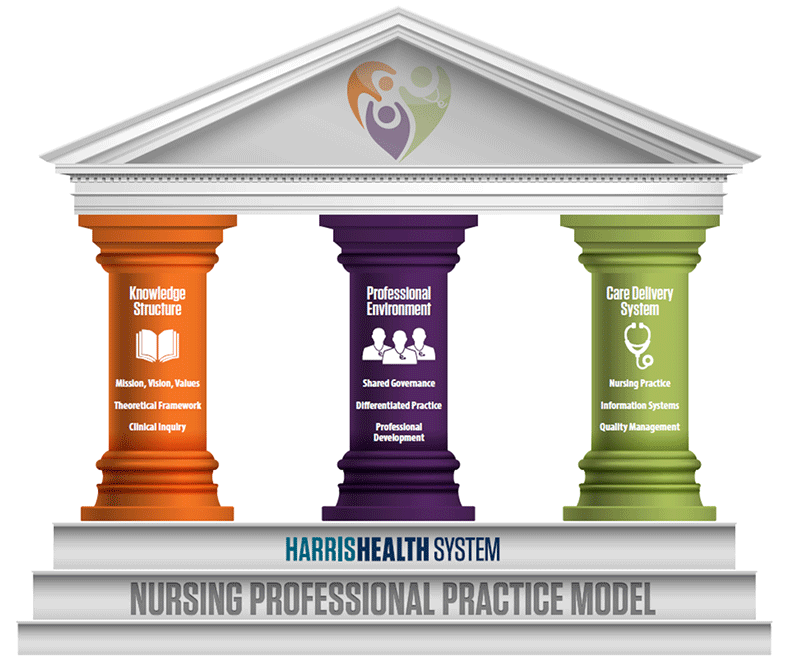
Domain III is the Care Delivery System. The Care Delivery System is a “system for the provision of care that delineates the nurse’s authority and accountability for clinical decision-making and outcomes” (ANCC). Integrated throughout the NPPM, it is adapted to regulatory considerations and describes the context of care, the manner in which care is delivered, skill set required and expected outcomes of care. Being a professional nurse also means more than doing tasks. We need to differentiate between performing tasks and practicing nursing. As nurses, we place patients in the best position to heal.
Green symbolizes safety, growth, hope, harmony and healing.
The three components in the Care Delivery System Domain promote continuous, consistent, efficient, and accountable nursing care:
- Nursing Practice
- Information Systems
- Quality Management
Nursing Practice
Nursing practice is what we do every day we come to work. This component involves clinical decision making, how work is allocated, how we communicate with patients and other professionals, and how we manage our nursing care. Our nursing practice is evidence-based and patient-centered.
Information Systems
Information Systems include the management and decision support processes integrated within the electronic health record (EHR). It is what we do every day—which is chart our nursing practice in Epic. These clinical documentation applications provide the information base and structure for nurses to deliver evidence-based and patient-centered care, as well as communicate with others on the healthcare team.
These processes enhance nursing care delivery by:
- Providing reference material at the point-of-service through Dynamic Health and HealthStream to access clinical evidence for making practice decisions.
- Using evidenced-based care plans and patient education materials in Epic and Dynamic Health.
- Using best practice alerts as a decision support tool at the point-of-care service and documentation.
Quality Management
Quality Management lays the foundation for an effective care delivery system. Managing quality (and safety) facilitates systems that provide:
- Evidence-based practice standards congruent with professional and regulatory requirements.
- Planning and operations oversight of quality management functions.
- Evaluation of outcomes associated with nursing practice--called "nurse sensitive" metrics, such as:
- National Database for Nursing Quality Indicators (NDNQI) (e.g., falls, infections – CAUTI, CLABSI, HAPI)
- CMS Core Measures (e.g., Foley removal, immunizations, breastfeeding)
- Patient satisfaction/engagement
- RN satisfaction
- Validation of effectiveness of care delivery systems and nurse practice patterns.
- Recommendations for quality or process improvement related to patient care on unit. This is clinical inquiry, which feeds right back into establishing evidenced-based standards.
At Harris Health, we practice the PDCA model for improvement, which is a cycle of high-quality care that involves a continuous loop to test improvement activities on a small scale of the following steps:
- Planning (identify the standard in which to improve)
- Doing (implement to plan for improvement)
- Checking/Studying (evaluate outcomes and benchmarks)
- Acting (validate performance and incorporate the final solution into practice for sustainment). If there is no satisfactory improvement, the cycle starts again.